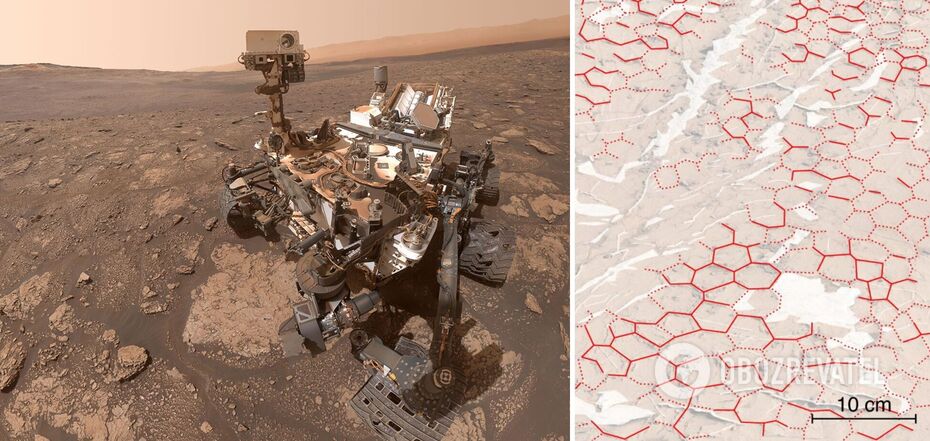News
Hexagonal patterns were discovered on Mars, and scientists are delighted with them: here's the reason
NASA's Curiosity rover has discovered dirt on the surface of the red planet that has cracked in hexagonal patterns. This discovery has fascinated Earth-based scientists, but not because they like clear geometric shapes.
The discovery is described in an article published in the journal Nature. According to Talker, the new work suggests that the same conditions that caused the cracks to appear could have been favorable for the emergence of microscopic life on the planet.
One theory of the origin of life on Earth suggests that the constant cycles of wet and dry conditions on land helped assemble the complex chemical building blocks that became the basis for microbial life.
It is the hexagonal pattern that scientists have seen that is the first evidence that early Mars experienced cycles of wetness and dryness.
"These specific mud cracks form when wet and dry conditions recur - possibly seasonally," said William Rapin, lead author of the paper from the French Institute for Astrophysics and Planetary Science Research.
Curiosity is gradually overcoming the sedimentary layers of Mount Sharp, which rises 5 kilometers in Gale Crater. The cracks in the dirt were found in the transition zone between a clay-rich layer and a layer above, enriched with salty minerals called sulfates. As the scientists explain, clay minerals are usually formed in water, while sulfates are formed when water dries.
The minerals that prevail in each zone reflect different eras in the history of Gale Crater. The transitional zone is evidence of a period in the history of the red planet when long dry periods prevailed and the lakes and rivers that once filled the crater began to recede.
Scientists note that mud usually dries out by cracking and forming T-shaped connections. But when water comes back to this dried mud, eventually these T-shaped joints soften and become Y-shaped, forming a hexagonal pattern.
The Curiosity data show that hexagonal cracks formed in the transition zone even as new sediment was being deposited. This, according to the researchers, is evidence in favor of the theory that the change in wet and dry conditions was not a one-time event, but persisted for a long time.
One of the Curiosity instruments confirmed the presence of a strong crust of sulfates along the edges of the cracks. It was this salt crust that strengthened the cracks, making them resistant to erosion. Thanks to this, they have been preserved for billions of years.
"This is the first material evidence that the ancient climate of Mars had such regular, Earth-like cycles of wetness and dryness," Rapin said.
He added that even more importantly, such cycles were beneficial for "molecular evolution that could have led to the emergence of life."
As explained, while water is essential for life, it needs to be carefully balanced, because the conditions that support microbial life are different from the conditions that scientists believe are necessary for the chemical reactions that can lead to life. The key product for such chemical reactions is polymers - including nucleic acids, which are considered the chemical bricks of life.
It is the wet-dry cycles that control the concentration of chemicals that power the fundamental reactions that lead to the formation of polymers.
"For 11 years, we have found a lot of evidence that microbial life could have existed on ancient Mars. Now the mission has found evidence of conditions that could have favored the emergence of life," the scientists emphasized.
Subscribe to OBOZREVATEL's Telegram and Viber channels to keep up with the latest developments.




























